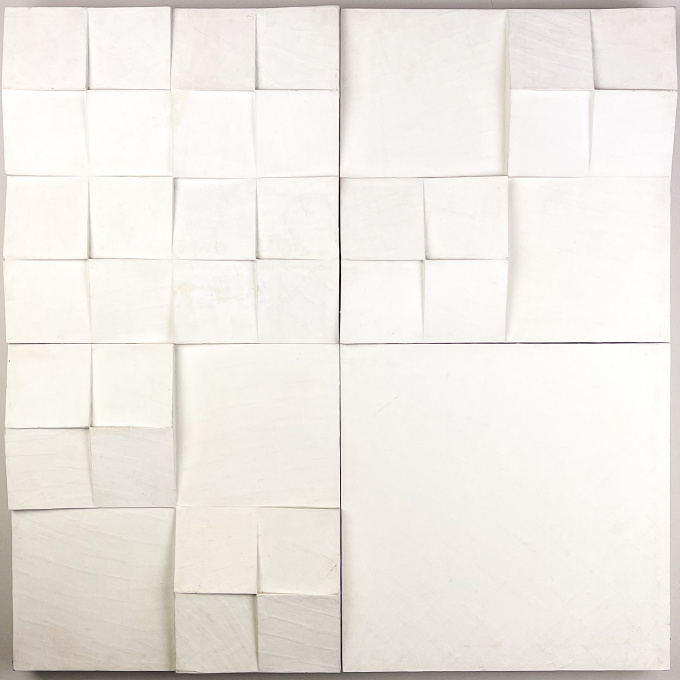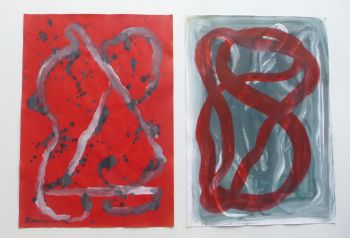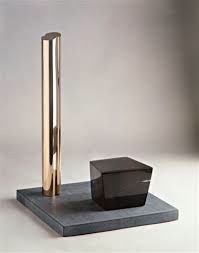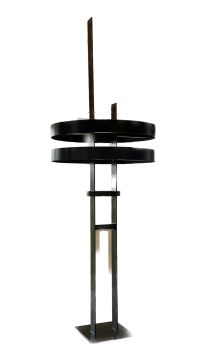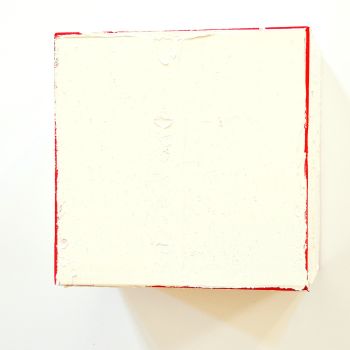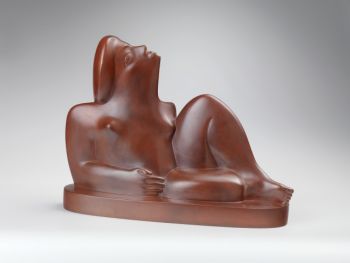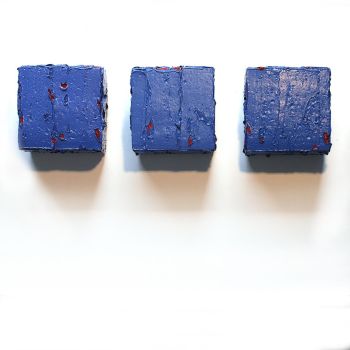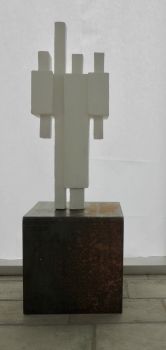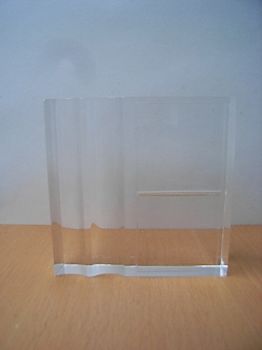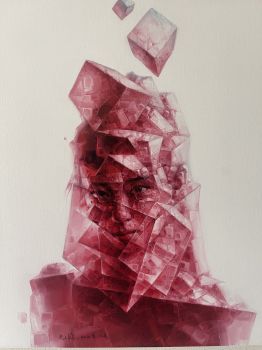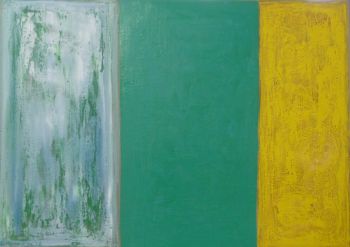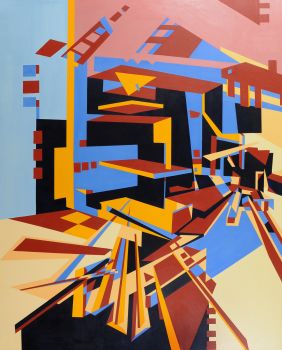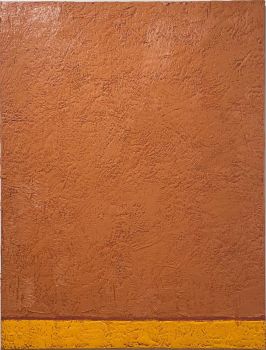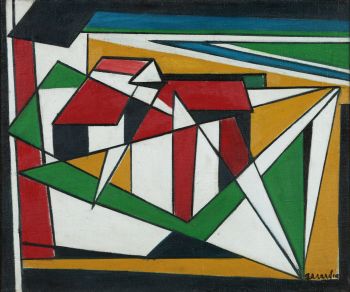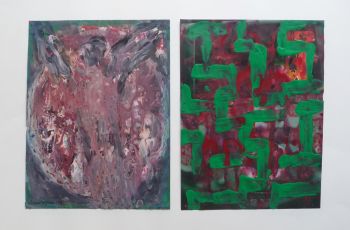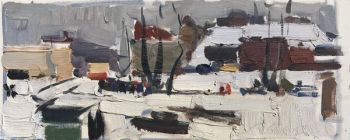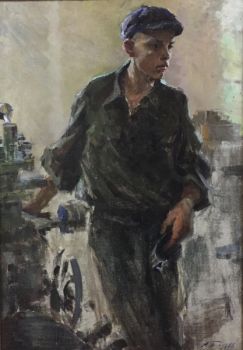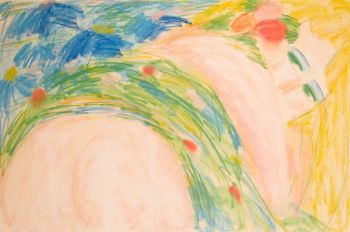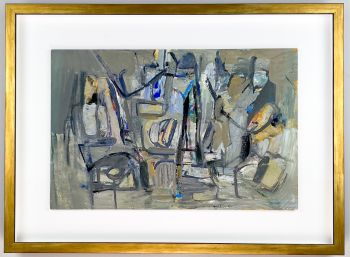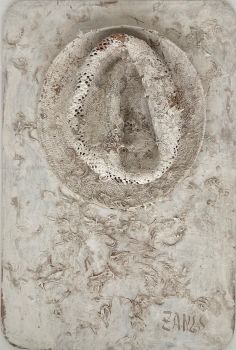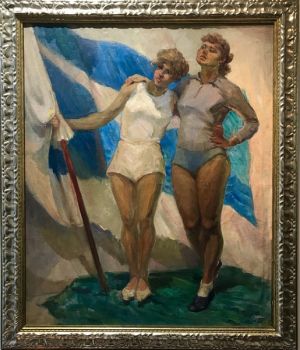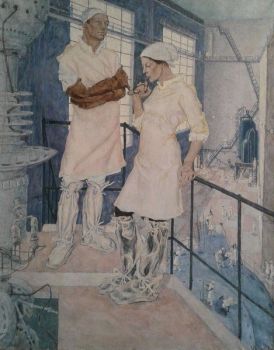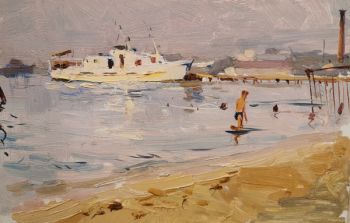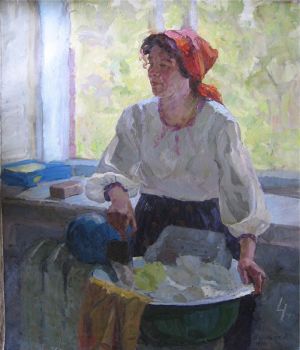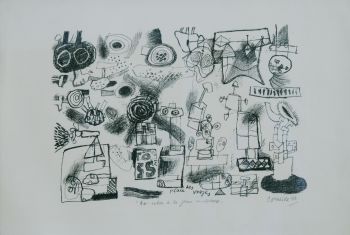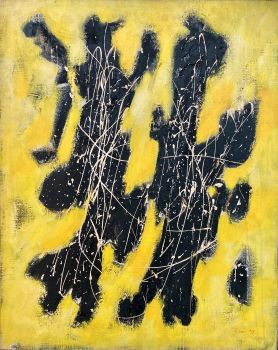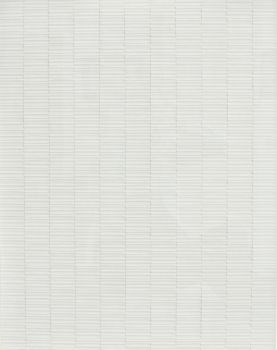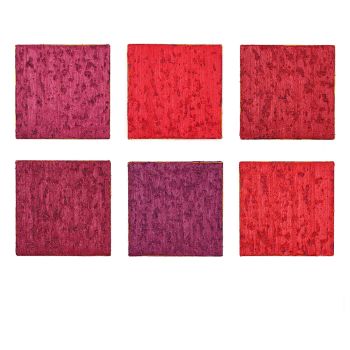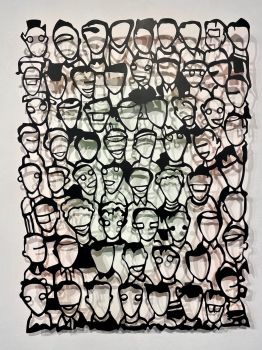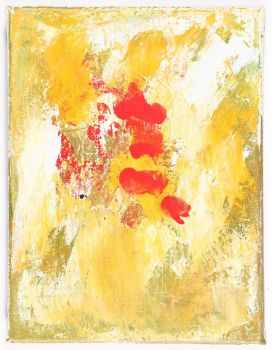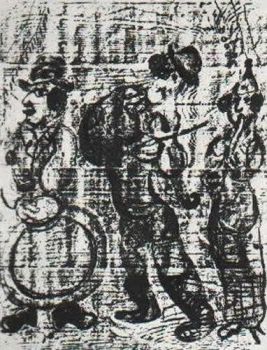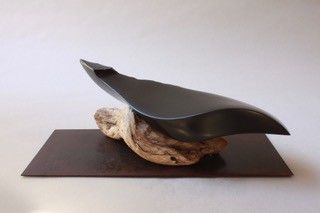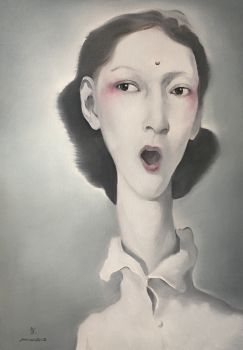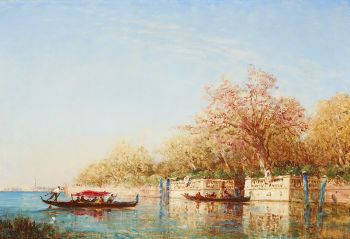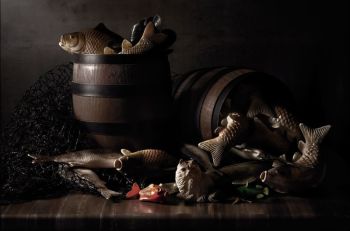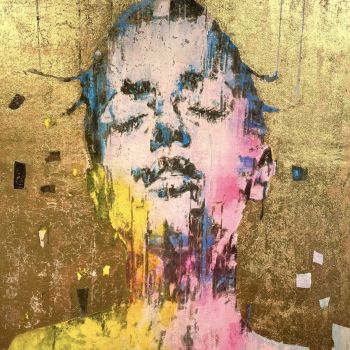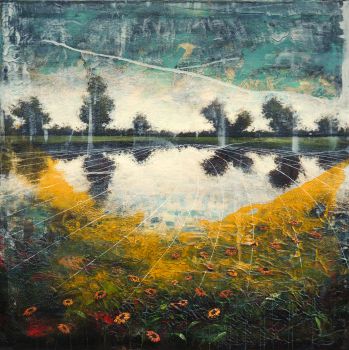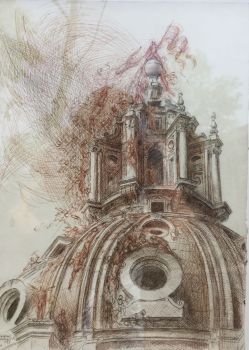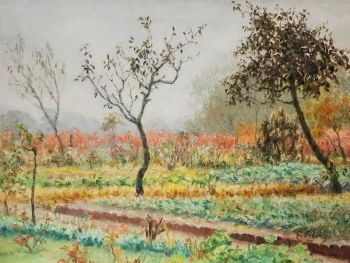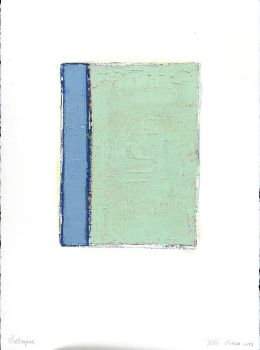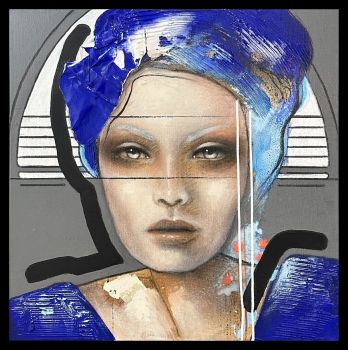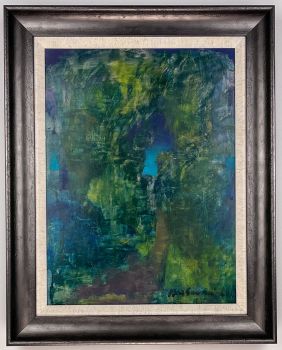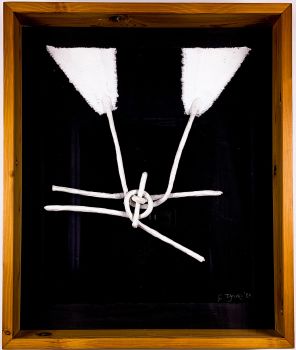Jaap Egmond – “IH 11-IH 12-IH 15-IH 16”, 1976 – relief: paper mache on wood, painted 1976
Jaap Egmond
MadeiraPapier machePintar
80 ⨯ 80 ⨯ 6 cm
ConditionGood
Preço em pedido
Van Kerkhoff Art
- Sobre arteAn original relief – painted paper mache on wood – by the Dutch artist Jaap Egmond. Sculpted in May and June 1976. Signed, titled and dated by the artist. The relief consists of four pieces each signed, titled and dated on the reverse, merged together in the final artwork. In clockwise order (seen from the front) the quarters are titled “IH 11”, “IH 12”, “IH 15” and “IH 16”. Jaap Egmonds works are very mathematically driven – very much in contrast with his inspirer Jan Schoonhoven. This work is a prime example of this where the diagonally opposite quarters complement each other mathematically.
About Jaap Egmond
Jacob Johannes (Jaap) Egmond (New York City 1913 – Amstelveen 1997) was a Dutch artist, sculptor, painter, teacher and also a gifted pianist.
Born in New York as the son of a captain on the deep sea, moved back to the Netherlands with his family due to the threat of World War I. He grew up in Amsterdam and completed his training as a drawing teacher at the Rijksinstituut tot Opleiding van Tekenleraar from 1932 to 1936. In his early years, he also studied piano at the Amsterdam Conservatory of Music.
After his training, Egmond started working as a drawing teacher at several schools in Amsterdam in 1937, which was the beginning of a lifelong dedication to teaching. After the war, he taught at the Vossius Gymnasium and later at the Kweekschool and the Pedagogical Academy in Amsterdam. In collaboration with colleague Klaas de Poel, he developed a new teaching method for the Teacher Training College.
In 1969, Jaap Egmond settled as an artist in Amstelveen. During his career, he made abstract reliefs, strongly influenced by the work of Jan Schoonhoven, with which he became a representative of minimalism in the Netherlands in the 1970s and 1980s. His work, ranging from cardboard and paper to freestanding work in steel, was characterised by the play of light and shadow and monochromy.
Egmond exhibited his art from the early 1970s in galleries and art institutions. In the 1980s, he also experimented with total theatre, with his large plastics serving as sets for modern music performances, in collaboration with Wim de Ruiter.
Jaap Egmond is remembered as a constructivist artist, whose work is influenced by the Dutch Zero movement. His creations reflect a constant search for form, light and shadow, and monochromy, through which he left a lasting impact on Dutch art.
Signed
Signed, titled and dated by the artist on the reverse
Condition
Good original condition, some stains, small water-damage on the side.
Provenance
Borzo Gallery, Amsterdam
Dimensions
Artwork
Height 80 cm
Width 80 cm
Depth 6 cm - Sobre artista
Jacob Johannes (Jaap) Egmond (nascido em 31 de agosto de 1913 em Nova York, falecido em 26 de novembro de 1997 em Amstelveen) foi um artista holandês versátil, conhecido por seu trabalho como escultor, pintor e professor, bem como por suas habilidades como artista. pianista.
Egmond deu uma contribuição significativa à educação e teoria artística, especialmente nas áreas de apreciação artística e educação em desenho.
A sua obra, que consiste principalmente em relevos abstratos, mostra uma clara afinidade com a obra de Jan Schoonhoven e coloca-o como uma figura de destaque dentro do movimento minimalista na Holanda durante as décadas de 1970 e 1980.
Nascido em Nova York, filho de um capitão, Egmond mudou-se com a família de volta para a Holanda devido à ameaça da Primeira Guerra Mundial, onde cresceu em Amsterdã. Entre 1932 e 1936 formou-se como professor de desenho no Instituto Nacional para a Formação de Professores de Desenho em Amesterdão, depois de estudar piano durante um ano no Conservatório de Amesterdão.
Após a formação, começou como professor de desenho em Amsterdã, em 1937, função que desempenharia ao longo de sua carreira. Após a Segunda Guerra Mundial lecionou no Vossius Gymnasium e mais tarde na Academia Pedagógica de Amsterdã, onde lecionou desenho, trabalho manual e história da arte.
Na década de 1960, juntamente com o colega Klaas de Poel, desenvolveu um método de ensino inovador para a Kweekschool, que foi incluído em vários livros didáticos.
Em 1969, Egmond estabeleceu-se como artista em Amstelveen, onde se concentrou na criação de centenas de relevos em cartão e papel, seguidos posteriormente de experiências com aço e pintura. Na década de 1980 trabalhou com Wim de Ruiter em projetos de teatro total, nos quais suas grandes esculturas formaram um cenário dinâmico para apresentações musicais modernas.
Egmond, que na juventude hesitou entre a carreira de pianista ou de professor de artes, mais tarde atuou como acompanhante de cantores em um círculo fechado. Ele foi casado com Joke Sprokkereef (1918-1986), professora, e juntos tiveram quatro filhos. A família morou em Amstelveen após a Segunda Guerra Mundial.
Como artista, Egmond é considerado um construtivista, fortemente influenciado pelo movimento holandês Zero. A sua obra caracteriza-se pela utilização de luz e sombra e pela preferência pela monocromia, com a qual deu um contributo único à arte moderna holandesa.
Você está interessado em comprar esta obra de arte?
Artwork details
Related artworks
 Com curadoria de
Com curadoria deDanny Bree
1 - 4 / 24 Com curadoria de
Com curadoria deGallerease Magazine
1 - 4 / 24Bernardus Johannes Blommers
Het bereiden van de maaltijd1870 - 1914
Preço em pedidoStudio 2000 Art Gallery
1 - 4 / 24- 1 - 4 / 12

